Tung Oil
Tung oil is a non-toxic penetrating oil that is used in refinishing furniture. It usually dries and penetrates slowly but you can add mineral spirits or turpentine to it if you want to quicken the drying and penetrating time. It comes from a deciduous China tree that grows heart-shaped leaves and fruits called Tung fruit. When these fruits are dried and compressed they can produce around 20% of Tung oil.
Tung oil is an effective finish because it is applied on as a liquid and then turns into a solid once it dries. When applying it, however, it is important to remember not to apply it too thickly, as this may cause the film to wrinkle.
There are many advantages and disadvantages to using Tung oil as your finish. Listed below are a few:
Advantages:
– Seals and hardens the wood, giving it a tough coating.
– Penetrates the wood’s fibers
– Provides a semi-clear coating with a minor amber color. This enhances the wood’s sheen.
– Coating is water resistant so it is suitable for use outdoors.
– Possibly the most durable of the clear finishes.
– Elastic, so no cracking will occur when the wood expands and contracts due to differing temperatures.
– Easy application, maintenance, and repair
– Doesn’t give a matte-like finish
– Better resistance to moisture than linseed oil
– Drying time can be quickened by adding solvents
– Readily available
– Affordable
Disadvantages:
– Time-consuming since sanding has to be done between each and every coat (there needs to be at least four to five) and the drying time for each is three to four days.
– Slow drying time
– Finish isn’t smooth since it doesn’t fill the wood’s grains
– Too thick application may lead to softness and wrinkling
– Should be applied regularly
Given its many advantages, it is safe to say that Tung oil is a better choice in refinishing than linseed or Danish oil and polyurethane. Although the other choices have their own advantages, Tung oil is the only natural finish that can give the best results among them. This is a perfect choice if you like to feel the wood’s natural grains instead of making it smooth. Tung oil is in fact one of the most used oil finishes for furniture.
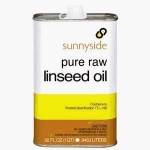 Linseed Oil
Linseed Oil
Linseed oil is another natural finish that is obtained from flax seeds. Like Tung oil, it is an effective finish because it is in liquid form when applied and then turns into solid as it dries. Also similar to Tung oil, linseed oil becomes soft and wrinkled when applied thickly. It is also one of the oil finishes that is most used when finishing.
There are two kinds of linseed oil: raw and boiled.
Raw linseed oil, as suggested by its name, is oil fresh from the seeds, packaged without any preservatives or additives. These, however, take a long time to cure.
Boiled linseed, on the other hand, is not really boiled. It is simply linseed mixed with solvents that make it act as if it was boiled. This kind of linseed oil only takes about a day to cure. Only boiled linseed oil should be used in wood finishing.
Like any other finish, the use of linseed oil has its own advantages and disadvantages.
Advantages:
– Easy application
– Rich and glossy finish
– Preserves the wood
– Resists water
– Much more affordable than commercial preservatives
– Readily available in many different forms and colors
– Penetrates the wood’s fibers
Disadvantages:
– Longer drying time than Tung oil but this can be quickened by adding solvents like turpentine and mineral spirits
– Feels oily or sticky while drying, may sometimes not even dry at all
– Needs lots of application for the finish to be good
– May be combustible
– Doesn’t offer UV protection
– Can encourage growth of molds
– Not very durable as it doesn’t harden adequately. Wax is needed for durability.
– Removal for refinishing is difficult
– Becomes soft and wrinkled when applied thickly
Linseed oil has been used in refinishing furniture for a long time. However, with the emergence of new and better finishes, linseed oil is not a very good choice anymore. There are still some people who prefer to use this but given that it has more disadvantages than advantages, it is advisable to choose another type of finish. It is also important to note that linseed oil does not only encourage the growth of molds but also doesn’t protect your furniture from the sun. These two are some of the major causes of furniture deterioration so it is evident that linseed is not a very good choice, especially for outdoor furniture.
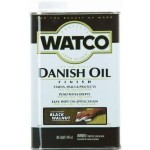 Danish Oil
Danish Oil
Many people confuse the different kinds of oil to be the same. Danish oil, which is yet another natural finish, is actually a type of Tung oil. Although it is also known as Chinese wood oil or linseed oil, it is definitely different from the latter. It is, in fact, a mixture of many different resins and oils and sometimes, other solvents. It is only known as Danish oil because it looks like the Danish style furniture from the 50’s and 60’s when it cures.
Because it is a type of Tung oil, it was also obtained from the nuts of the deciduous trees that are mainly found in China. What’s interesting about it is that it penetrates the wood’s grain but it also seeps back into your furniture’s surface. It can also be used in any type of wooden furniture, indoor or outdoor, and can give them a soft and radiant finish.
Advantages:
– Easy application, repair, and restoration
– Dries fairly quickly
– Clear matte or satin finish
– Penetrating finish
– Resistant to water. When the surface is properly sanded, it can even be resistant to hot water.
– Light finish
– Can be coated with paint or varnish
– Can be used either as a primer or a sealer
– Non-tacky surface
– Doesn’t yellow with age
– Can be used over polyurethane
– Can be mixed with tints if you want color
– Wax can be used over it
– Gives a natural look but other oils can be applied on it for a glossy look
Disadvantages:
– Less durability than other finishes
– Needs regular application and maintenance
– Can only be applied on bare wood
– Wood’s grain can still be felt after finishing
– Not recommended for surfaces that are used for cutting (e.g. chopping board)
Danish oil is better to use than polyurethane because the wood is hardened from the inside. This allows the wood’s natural beauty to show instead of giving it a synthetic coating. Also unlike polyurethane, which is very hard to repair, simply re-coating scratched Danish oil finishes brings back its former glory. When working with floorboards, using polyurethane will leave you with cracks when the floorboards move. However, using Danish oil will ensure that there are no cracks because each and every board is coated individually. In fact, Danish oil can even be used over polyurethane if the surface is properly sanded. This, however, is not advisable, as the polyurethane will still exhibit cracking and yellowing.
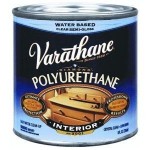 Polyurethane
Polyurethane
Polyurethane is yet another type of durable finish that can be used in refinishing furniture. It may be a little on the down side when compared to the others mentioned above since many people associate it with looking like plastic. This, however, is not entirely true. Although its chemical structure is close to that of plastic’s, the dried finish doesn’t look very different from other finishes. Learn more about polyurethane finishes in these related posts:
Differences Between Oil-Based And Water-Based Polyurethane
Differences Between Polyurethane And Urethane
Some advantages of using polyurethane are:
– Quick drying
– Less probability of showing brush marks due to good flow
– Durable
– It’s a sealer in itself
– Smooth finish
– Available in different gloss finishes
– Water and alcohol resistant
On the other hand, the disadvantages include:
– Plastic-looking
– Difficult to remove and repair
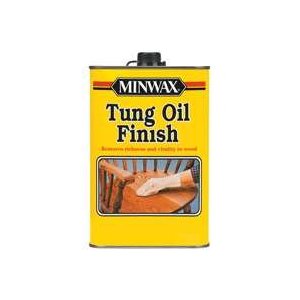
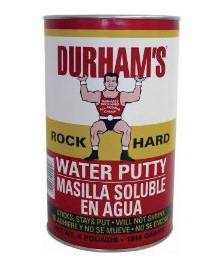


Help we made our daughter a red cedar bed and she wants to age it with a white wash or milk paint. We want to put a Danish oil just to seal the raw wood first just in case she decides to take off the white wash paint someday. Would that work or what would you suggest?
We plan to power wash 6″ X 6″ treated landscape timber steps, then apply tung oil with a sprinkling of fine sand to make stepping surfaces non-slip. Good idea or not?
If not, what alternative Is there to apply a long lasting sealing surface that will hold up to exterior weather conditions. We prefer a clear sealer vs. paint for esthetic reasons.
Thanks for the input.